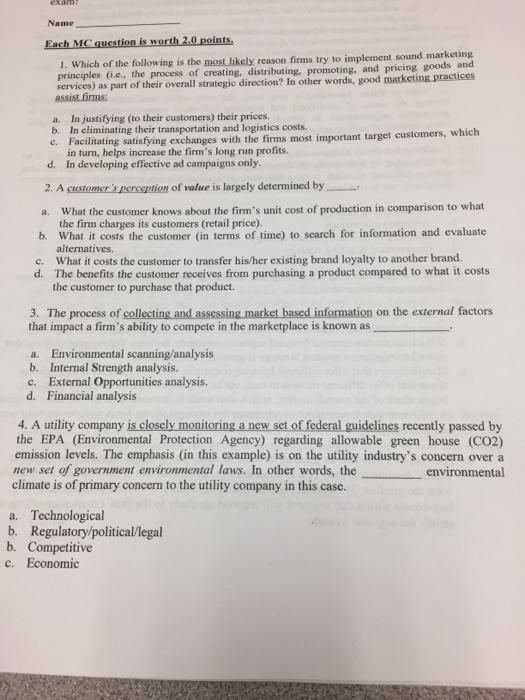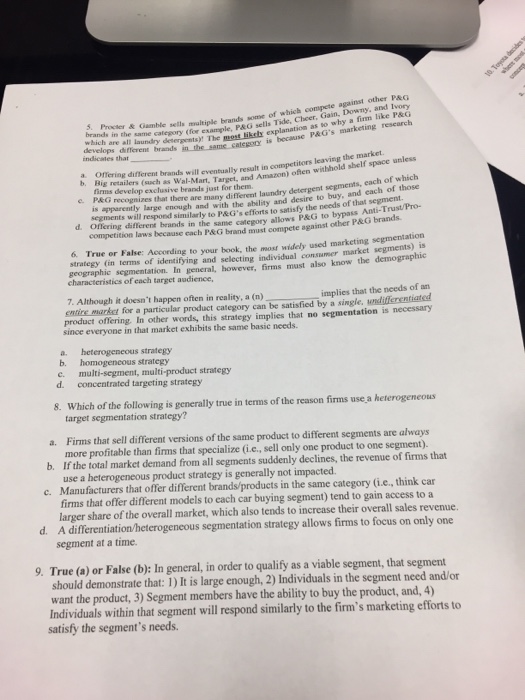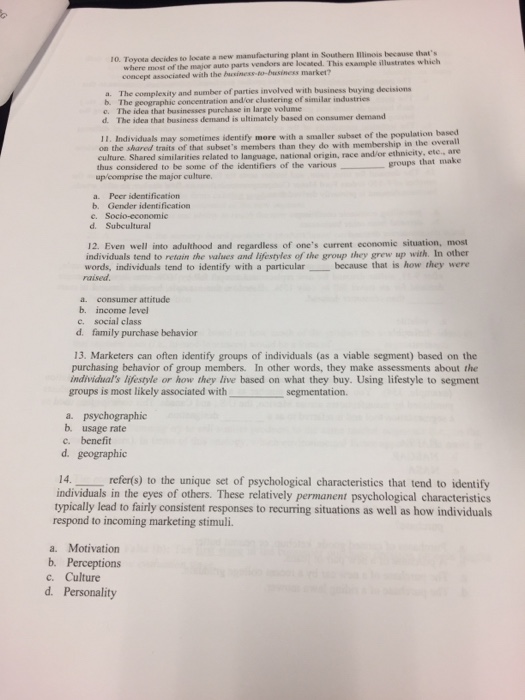Name Each MC question is worth 2.0 points 1. Which of the following is the most likely reason f firms try to implement sound marketing principles (i.e, the process of creating, distributing, promoting, and pricing goods and services) as part of their overall strategic direction? In other words, good marketing practices assist firms: In justifying (to their customers) their prices. a. b. In climinating their transportation and logistics costs. c. Facilitating satisfying exchanges with the firm d. 2. A customer's perception of value is largely determined by s most important target customers, which in turn, helps increase the firm's long run profits. In developing effective ad campaigns only. What the customer knows about the firm's unit cost of production in comparison to what the firm charges its customers (retail price). a. b. What it costs the customer (in terms of time) to search for information and evaluate alternatives. What it costs the customer to transfer his/her existing brand loyalty to another brand. The benefits the customer receives from purchasing a product compared to what it costs the customer to purchase that product. c. d. 3. The process of collecting and assessing market based information on the external factors that impact a firm's ability to compete in the marketplace is known as a. Environmental scanning/analysis b. Internal Strength analysis. c. External Opportunities analysis. d. Financial analysis 4. A utility company is closely monitoring a new set of federal guidelines recently passed by the EPA (Environmental Protection Agency) regarding allowable green house (CO2) emission levels. The emphasis (in this example) is on the utility industry's concern over a new set of government environmental laws. In other words, the climate is of primary concern to the utility company in this case. environmental a. Technological b. Regulatory/political/legal b. Competitive c. Economic Name Each MC question is worth 2.0 points 1. Which of the following is the most likely reason f firms try to implement sound marketing principles (i.e, the process of creating, distributing, promoting, and pricing goods and services) as part of their overall strategic direction? In other words, good marketing practices assist firms: In justifying (to their customers) their prices. a. b. In climinating their transportation and logistics costs. c. Facilitating satisfying exchanges with the firm d. 2. A customer's perception of value is largely determined by s most important target customers, which in turn, helps increase the firm's long run profits. In developing effective ad campaigns only. What the customer knows about the firm's unit cost of production in comparison to what the firm charges its customers (retail price). a. b. What it costs the customer (in terms of time) to search for information and evaluate alternatives. What it costs the customer to transfer his/her existing brand loyalty to another brand. The benefits the customer receives from purchasing a product compared to what it costs the customer to purchase that product. c. d. 3. The process of collecting and assessing market based information on the external factors that impact a firm's ability to compete in the marketplace is known as a. Environmental scanning/analysis b. Internal Strength analysis. c. External Opportunities analysis. d. Financial analysis 4. A utility company is closely monitoring a new set of federal guidelines recently passed by the EPA (Environmental Protection Agency) regarding allowable green house (CO2) emission levels. The emphasis (in this example) is on the utility industry's concern over a new set of government environmental laws. In other words, the climate is of primary concern to the utility company in this case. environmental a. Technological b. Regulatory/political/legal b. Competitive c. Economic











